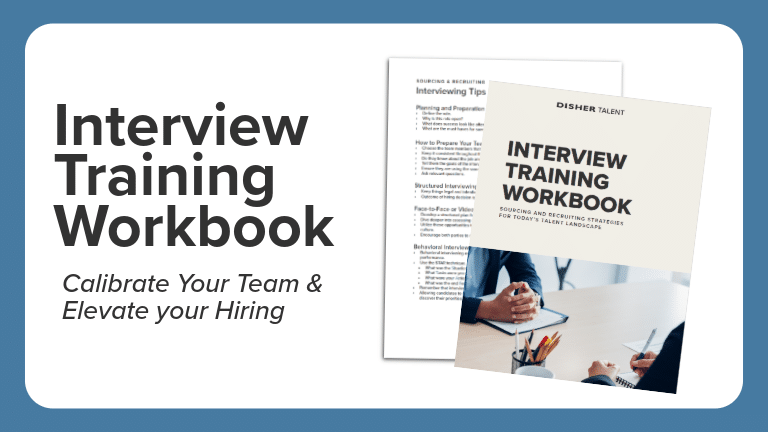
Panel interviews can feel a bit intimidating from the candidate’s perspective, and as the one organizing the interviews. You want to be efficient and make an educated hiring decision without losing a great candidate because of one awkward hour. If that sounds familiar, this article will show how to run in-person panel interviews that are structured, fair, and fast. You’ll get a step-by-step plan for panel makeup, structured questions, and debriefs.
Quickly jump to what you need:
- When is a panel interview the right choice?
- Who should be on the panel?
- A simple in-person panel flow and timing.
- EEOC‑safe interviewing with examples of what not to ask.
- How to run a debrief and move to a decision without groupthink.
- What tools are needed for panel interviews?
When Does a Panel Interview Make Sense?
Use a panel when the role affects multiple teams, decisions are high impact, and you need varied lenses—technical depth, behavioral approach, leadership, or cross-functional collaboration—in a single pass. Panels are especially useful to reduce repeat interviews, standardize evaluations, and improve the candidate experience when they are consistent.
Keep Candidate Experience In Mind
Maintain a strong candidate experience in panel interviews by recognizing that the format can feel intimidating and balance it with a warm welcome, a brief agenda, and a few minutes of casual introductions to set a relaxed tone. Arrange the room to feel collaborative—mix panelists around the table, avoid a straight lineup facing the candidate. Reduce anxiety by telling candidates in advance about the interviewers they’ll meet and appoint a facilitator to guide the flow of the conversation. Offer water or a beverage, practice active listening, allow for pauses, and close by explaining next steps and leaving time for their questions.
Who Should Be on a Panel Interview?
Aim for three to five interviewers with a clear facilitator, dedicated note takers, and subject matter owners for specific competencies. Include the hiring manager, a peer, a cross-functional partner, and an optional HR partner for consistency and compliance. Assign owned topics so panelists don’t overlap: for example, one covers technical depth, another covers behaviors, and another covers collaboration.
A Simple In‑Person Panel Flow and Timing
Open with introductions and the agenda to lower anxiety, set expectations, and explain who owns which topics, which helps candidates give better, more focused answers. Have one person asking questions at a time while the others take notes, keeping the conversation clear and fair. Try to keep the structure to the interview, discussing questions regarding one topic area at a time, so the candidate can focus on the conversation with the topic owner. Close by outlining next steps and timing, then dismiss the candidate before any discussion, which avoids bias and makes the debrief more efficient.
Sample 60-minute agenda:
- 5 minutes: introductions, agenda, role summary, and context
- 45 minutes: structured questions per panelist topic
- 10 minutes: candidate questions
Save 10 – 15 minutes for panel interviewers to privately debrief before sharing thoughts.
Keep It Fair and EEOC‑Safe
Stick to job-related questions and avoid protected characteristics such as age, disability, marital status, religion, national origin, and pregnancy. If a requirement is job-related—like shift coverage, lifting, or travel—ask if the candidate can perform the function, not about their personal situation or medical history. Give every candidate the same core questions so decisions are based on evidence, not assumptions, which supports compliance and fairness.
Quick do‑not‑ask examples:
- How old are you, or what year did you graduate?
- Are you married, do you have kids, or do you plan to have kids?
- Do you have a disability or health condition?
Run an Effective Debrief
Have interviewers record independent scores, notes, and evidence before discussing, which reduces groupthink and makes the debrief faster and more honest. Compare across competencies to spot patterns—consistent strength on troubleshooting but mixed safety judgment, for example—then decide on next steps based on the job-related skills, not charisma. Document the final decision with a summary of notes on each competency in the ATS, which builds a reviewable record and helps future calibration across sites and roles.
What Tools are Needed for Panel Interviews?
Use your ATS to host structured interview guides, collect standardized feedback, and store evidence, which supports consistency and auditability across your locations. Calendar holds, printed interview agenda or guides, and a shared debrief template cover most in-person needs; use Teams only as a backup for a remote panelist or to standardize note-taking if someone can’t be in the room.
If you add AI notetakers, you still require human evidence summaries tied to competencies, because hiring decisions must rest on job-related facts, not raw transcripts.
Common Pitfalls and Quick Fixes
- Too many interviewers: keep it to 3–5 with owned topics and a single facilitator to prevent crosstalk and drift.
- Unstructured questions: use a shared guide, job description, and key role requirements to compare apples to apples and reduce bias across candidates.
- Talking about off-limit topics: rehearse safe phrasing and keep questions tied to duties and conditions of the job per EEOC guidance.
- Handwavy debriefs record feedback first, then discuss evidence by competency, with the rubric on-screen or printed.
What to Do Next
When panel interviews are anchored in a structured process and shared standards, teams make clearer, faster decisions and give every candidate an equal, consistent evaluation.
Download our Interview Training Workbook now for more practical interview tips. Then schedule a live training course with our recruiting experts to upskill your hiring team.





